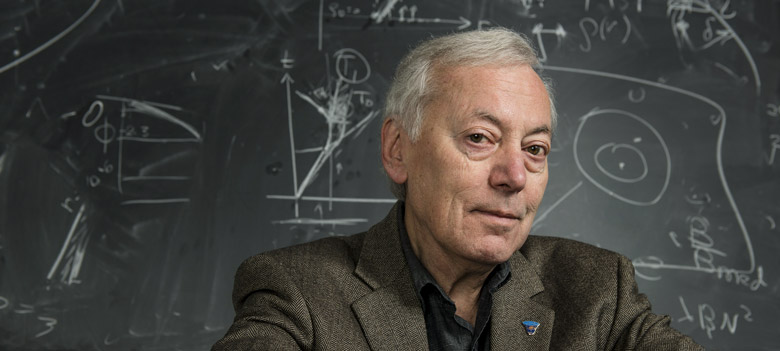Bunyan Lecture at Stanford: 'The Universes Beyond the Horizon'
Infinite 'bubble universes,' filled with alternate versions of ourselves or nothing at all, might exist right alongside our own, according to physicist Alexander Vilenkin of Tufts University, who will discuss this theory during Stanford's annual Bunyan Lecture on March 9.
Fewer than 100 years ago, people thought the Milky Way was the whole universe. Then it was discovered that galaxies exist beyond the confines of our home galaxy. Now, it is thought that the Big Bang might not be the singular beginning of all space and time. There may have been other events producing other universes: a multiverse.
The multiverse theory will be explained by Alexander Vilenkin, the director of the Institute of Cosmology at Tufts University, at Stanford's 33rd annual Bunyan Lecture. Vilenkin will speak at 7:30 p.m. Wednesday, March 9, in Braun Auditorium, Mudd Chemistry Building.
In 1970 philosopher James T. Bunyan approached the Stanford Department of Physics hoping to fund a lecture series to explore theories "that give a reasonable explanation of the origin and structure of the Universe, the beginnings of life and the ascent and destiny of man."
Following Bunyan's detailed legacy, this year's lecture will address what lies beyond the visible bounds of our universe. "When I teach elementary courses, I usually say the universe is everything that there is," said Vahe Petrosian, a Stanford professor of physics and of applied physics, and chair of the committee that selected Vilenkin. "If you go to the edge of it and there is still some more, that is part of the universe, too."
But there is also a universe that is limited by what people can see: the visible universe. Around 13.8 billion years ago there was a Big Bang, a really hot, dense phase when the universe started expanding. Everything in the visible universe has to be younger than that. But, theoretically, people suspect that the universe seen with telescopes – what we see within the horizon of the Big Bang – may not be all there is.
"You say this is the beginning, and then you ask, 'What was before that?' If you go to some edge, there is always the question, 'Is there something beyond that edge?'" Petrosian said.
The theory of eternal inflation, proposed in part by Vilenkin, could begin to answer these questions. Eternal inflation says that space is always expanding overall, but some pockets of space will expand and create universes while others stop expanding. The universes that form are called "bubble universes" because they bubble up where energy is being concentrated.
"We used to think that beyond the visible universe there was simply more of the same," said Vilenkin. "More planets and stars and galaxies. But other universes may have different physical laws."
Not all bubble universes are created equally. If the mass of a proton or electron were tweaked, the universe might not have stars, planets or life. Some of the universes expand, contract and collapse in a very short time before forming everything. Some universes are like ours.
It's possible that sometimes these bubbles interact, and that one will interact with our bubble and produce observational evidence. "I'm hoping that Vilenkin will talk about that," Petrosian said. "Say, what are the possibilities, what happens if these bubbles interact, what sort of information will it give us."
A recent paper co-authored by Vilenkin describes the possibility that bubble universes were created inside of the visible universe during the Big Bang. Many of these universes collapsed and formed black holes, Vilenkin said. If the black holes are big enough, they may have inflating universes inside of them, and these expanding universes would be connected to the visible universe by wormholes.
Despite the similarities between Vilenkin's theory and the Wikipedia summary of the film Interstellar, many scientists have hope for the multiverse theory.
"Once a reasonable idea comes, you can never say it's wrong," affirms Petrosian. "And this is not too crazy. We will probably never have answers to these questions, but it is important to ask them. So we do ask, and sometimes we are successful."
Media Contact
Bjorn Carey, Stanford News Service: (650) 725-1944, bccarey@stanford.edu


Share This Story